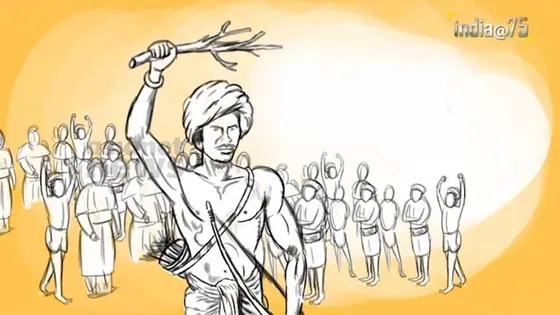
India@75: Birsa Munda, the tribal leader behind Munda revolt
There is only one tribal leader among the pictures of India's foremost freedom fighters adorning the country's hallowed parliament hall.
There is only one tribal leader among the pictures of India's foremost freedom fighters adorning the country's hallowed parliament hall. He is Birsa Munda. There are umpteen tribal groups that fought against the colonial invaders. Yet the most famed among them was the Munda revolt led by Birsa Munda. In the last decades of the 19th century, the Munda's motherland was spread out in the present Jharkhand state, which was part of the erstwhile Bengal Presidency. Khunti, Tamar, Sarwada, and Bandgaon villages form this region.

The forests and hills have, from time immemorial, provided the livelihood for the tribal folk. For whom hills and jungles were part of their own body and soul. But the colonial masters' highly exploitative agrarian and forest policies drove the tribal people out of their own forests. Instead, the coloniser brought in outsiders to take over the tribal lands. The coloniser grabbed away the tribals' livelihood. The feudal settlers were equally brutal and exploitative.
Economically exploited, the tribals' cultural identity too was under siege. A largescale religious conversion initiated by the foreign missionaries backed by the English transformed the tribal world. Like hundreds of others like him, Birsa's family too converted to Christianity. Birsa became Birsa David, and he joined a German Mission school.
Grazing goats and music were Birsa's ways of survival against life's extreme miseries. By the time he grew into adolescence, Birsa was politically and culturally awake. He abandoned his Christian identity in his fight against the British colonisers. He mobilised tribals to rise against the British and coined the slogan Down with the Queen's rule, let's rise to have our own rule. He emerged as the most popular leader even at a young age and was fondly called the Father of Earth. Birsa rose to the level of a prophet for his community.
Soon the armed tribal movement led by Birsa spread across the region. English installations and police stations were attacked. Much blood was shed, and violence enflamed the jungles. The East India Company, after initial setbacks, suppressed the tribals with brute force. Thousands were rounded up. Hundreds lost lives. Though Birsa escaped first to Singbhum hills was captured later from Chakradharpur jungles. Birsa became a martyr inside the British prison at the age of 25.
Today Birsa is revered across a large region ranging from Jharkhand to Karnataka. His birthday is celebrated as Janjatiya Giourav divas. Birsa was the inspiration behind Mahasweta Devi's classic work, Aranyer Adhikar.
Also watch:
India@75: Story of Kavi Pradeep, who created songs that espoused nationalist spirit
India@75: Story of VOC Pillai, the patriot who 'steered the ship'